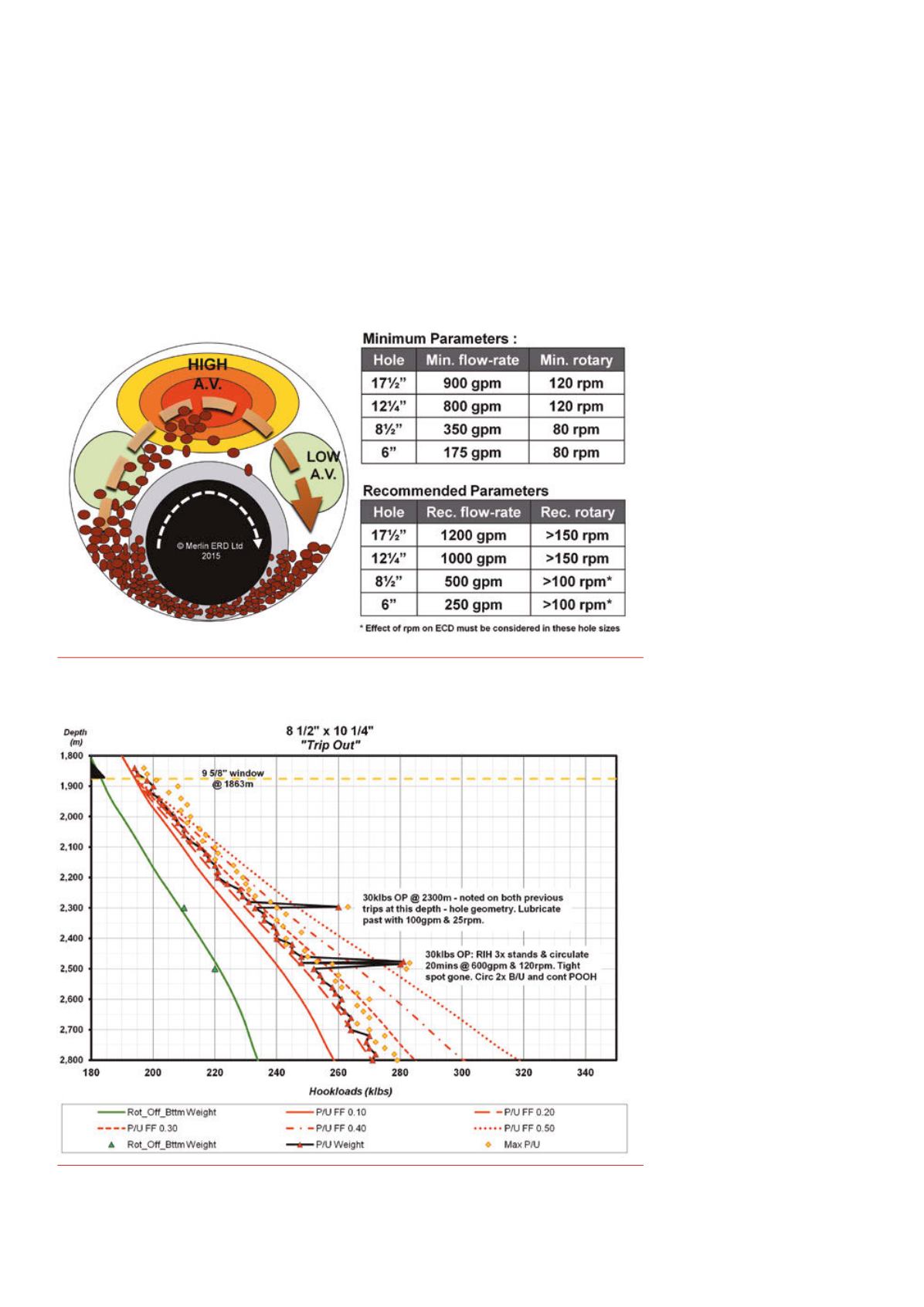
32 |
Oilfield Technology
June
2015
simple, but highly effective guidance on how to prevent difficult trips
from becoming ‘train‑wrecks’.
Planning
It is unfortunately often the case that inadequate well planning is found
to have played a role in creating the conditions that almost guarantee
problematic trips, and it would be remiss to not highlight some of these
issues.
Resourcing
It is important to avoid late changes in drilling schedules or
under‑resourced teams. Complex wells require time to plan, and
attempts to accelerate or short‑cut the planning process invariably lead
to problems further down the line.
Keypersonnel
Key operator, rig contractor and service company personnel should
have significant experience in similar operations.
Training
Rig teams are better able to respond to problems during trips when
they have been given appropriate training in high angle practices. This
is especially so where operations are progressing from low inclination
E&A wells to development wells, or where new rigs and crews are
mobilising.
Offsetwell review
The starting point for any ERD or complex well should be a
comprehensive offset well review to identify potential hazards. An
often overlooked aspect of such
reviews is the need to quantify
previously experienced friction
factors. As well departures increase,
it becomes more likely that
equipment or other system limits
will be reached, and knowledge
of local friction factors is essential
to ensure an appropriate well
design and adequately specified
equipment.
Wellborestabilitystudy (WBS)
A trajectory specific WBS is preferred
to highlight issues such as low
mud weight window and identify
‘swab down to’ and fracture limits.
This will dictate tripping and casing
running speeds, reducing the risk of
hole enlargement occurring (which
is detrimental to hole cleaning and
tripping).
Drillingprogrammes
It is advised that these include
comprehensive hole cleaning and
tripping procedures; it should not be
assumed that each member of the rig
team has the appropriate experience
on similar wells to adopt the correct
practices.
Holecleaning
Whilst the focus of this article is
tripping, the role of hole cleaning is
so fundamental that it is impossible
not to consider it.
When drilling at high inclination,
drilled cuttings quickly gravitate to
the low side of the wellbore where
they accumulate to form a cuttings
bed. As drilling progresses the
cuttings bed achieves an equilibrium
height, dictated in part by the rate
of penetration (i.e. the amount of
material being added) and the flow
rate, drill string rotary speed and
mud parameters, which influence
Figure 2.
Torque anddrag roadmap example: plottingactual hookloads on top of theoretical curves allows the
driller to quickly identify departures in trendand take the appropriate remedial action. This simple but effective
technique shouldbe performed routinely on complex and ERDwells.
Figure 1.
Hole cleaning thresholds: optimal hole cleaning occurswhendrillingparameters remainabove
‘recommended’. If parameters dropbelow ‘minimum’ then hole cleaningmay be significantly compromised
and increased trip risk shouldbe anticipated.


